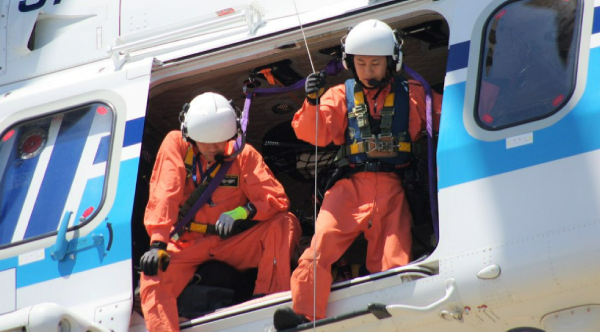
www.newsbusters.org
Psaki Flunks Civics In Order To Say Trump Should 'Scare The Hell Out Of You'
Former White House Press Secretary and current MSNBC host Jen Psaki traveled over to NBC and Late Night with Seth Meyers on Thursday to preview President Joe Biden’s press conference, which had not yet happened at the time of recording, by mourning the public hasn’t seen “the magic of Joe Biden.” At the same time, she claimed Donald Trump’s association with Project 2025 should “scare the hell out of you” while flunking basic civics about the Constitution’s separation of powers.
Amidst the backdrop of Democratic unease over Biden, Psaki claimed voters actually need to see more of him, “That's one of the reasons why it's such a high stakes press conference, which everybody keeps using that phrase, as you said, because the pressure is on.”
However, Psaki admitted press conferences are not Biden’s strong suit, but “he's incredibly empathetic. He cares. He loves to hold babies. He legitimately loves them. He likes to travel with members of Congress, said no one ever, except for Joe Biden. So, that you're not seeing. And because you're not seeing, and the public is not seeing him and the magic of Joe Biden, you're relying on how is he going to answer the ninth question about his mental acuity at a press conference.
Psaki also declared that “in that sense, the strategy is not going well. Oh, can I say one other thing about the strategy? Is that -- nobody knows the path forward. And members of Congress and people who are rooting for him want to know, how do you win this race? How do you defeat Donald Trump? People just want a little something to go with, and they don't have it.”
Meyers then lamented, “It's interesting you say that because, of course, one of the things about Donald Trump is, you know, he speaks all the time, that you sort of forget how crazy he sounds. That if Donald Trump -- if what Donald Trump did yesterday, he -- was the only time we've seen him in the last two months, you would be like, ‘What the [bleep] is wrong with that guy?’
As Psaki agreed, “You would be like, ‘What the [bleep] is wrong with that guy?’ Meyers continued, “But he just floods the zone and so I think one of the things working against President Biden is because we see him less, you just put so much more into what you're seeing.”
Speaking of Trump, Meyers turned to the left’s favorite boogeyman: The Heritage Foundation’s Project 2025, “You mentioned, you know, if we, you know, have a democracy in a few years, we've been talking a lot about this document, Project 2025. Because, you know, while we, you know, it's not that we lose our focus. I think what's happening with the president is serious and requires attention, but Project 2025, this is, you know—”
Psaki interjected with “scary” as Meyers rolled on, “the plan of what the Trump Administration in its second time around wants to do. Have you ever seen anything like it? How outside the norm is this?”
An adjective-addicted Psaki began, “Way crazy, whackadoodle, insane, outside of the norm. You know, when it's 900 pages, it's on the Heritage website, and you can read it should you choose. If you're not asleep, just because it's long, it will scare the hell out of you. Because there's a lot of pieces in there. I mean, overall, there's a lot of things in there like mass deportations, camps, all sorts of things that are frightening and scary and alarming and not who we are.”
The judicial branch of government refers to the courts, while the Justice Department is part of the executive branch, but Psaki didn’t seem to know that:
But overall, it's basically a roadmap for Trump becoming all-powerful. It increases the power of the executive branch of government. There is a reason for checks and balances, for three branches of government, for a judiciary that's independent, so that they can hold people to account. That's what it's there for. He wants to get rid of that so he can go after his political enemies and so that he can use it as a weapon against people he doesn't like or who have done him wrong. If that doesn't scare the hell out of you, I don't know what does.
Confusing Donald Trump for Kamala Harris and Volodymyr Zelensky for Vladimir Putin might scare quite a few people.
Here is a transcript for the July 11-taped show:
NBC Late Night with Seth Meyers
7/12/2024
1:17 AM ET
JEN PSAKI: So, what people should understand is there's a lot of advisers who may be telling him, "Here's what you should be doing. You should be out there more. You should be doing more events. You should be engaging with people."
He's clearly not doing that. That's one of the reasons why it's such a high stakes press conference, which everybody keeps using that phrase, as you said, because the pressure is on.
They haven't seen him a lot. At the same time, it's also your job, when you're advising a president, to bring out their magic. I know that's a weird way of saying it, but President Biden's magic is not necessarily press conferences, I think it's safe to say. It's not even really necessarily interviews. It's his interactions with people. He's incredibly empathetic. He cares. He loves to hold babies. He legitimately loves them. He likes to travel with members of Congress, said no one ever, except for Joe Biden. So, that you're not seeing. And because you're not seeing, and the public is not seeing him and the magic of Joe Biden, you're relying on how is he going to answer the ninth question about his mental acuity at a press conference.
And in that sense, the strategy is not going well. Oh, can I say one other thing about the strategy? Is that -- nobody knows the path forward. And members of Congress and people who are rooting for him want to know, how do you win this race? How do you defeat Donald Trump? People just want a little something to go with, and they don't have it.
SETH MEYERS: It's interesting you say that because, of course, one of the things about Donald Trump is, you know, he speaks all the time, that you sort of forget how crazy he sounds. That if Donald Trump -- if what Donald Trump did yesterday, he -- was the only time we've seen him in the last two months, you would be like, "What the [bleep] is wrong with that guy?"
PSAKI: You would be like, "What the [bleep] is wrong with that guy?"
MEYERS: But he just floods the zone and so I think one of the things working against President Biden is because we see him--
PSAKI: Yeah.
MEYERS: -- less, you just put so much more into what you're seeing.
…
MEYERS: You mentioned, you know, if we, you know, have a democracy in a few years, we've been talking a lot about this document, Project 2025. Because, you know, while we, you know, it's not that we lose our focus. I think what's happening with the president is serious and requires attention, but Project 2025, this is, you know --
PSAKI: Scary.
MEYERS: -- the plan of what the Trump Administration in its second time around wants to do. Have you ever seen anything like it? How outside the norm is this?
PSAKI: Way crazy, whackadoodle, insane, outside of the norm. You know, when it's 900 pages, it's on the Heritage website, and you can read it should you choose. If you're not asleep, just because it's long, it will scare the hell out of you. Because there's a lot of pieces in there. I mean, overall, there's a lot of things in there like mass deportations, camps, all sorts of things that are frightening and scary and alarming and not who we are.
But overall, it's basically a roadmap for Trump becoming all-powerful. It increases the power of the executive branch of government. There is a reason for checks and balances, for three branches of government, for a judiciary that's independent, so that they can hold people to account. That's what it's there for.
He wants to get rid of that so he can go after his political enemies and so that he can use it as a weapon against people he doesn't like or who have done him wrong. If that doesn't scare the hell out of you, I don't know what does. Now he denies, as you know -- he denies he knows anything -- he says he doesn't know anything about it. Then he says it's bad and then he wishes them luck.
MEYERS: Yeah.
PSAKI: It's like, what is happening right now? But it is his plan put together by his people who have worked for him before and will work for him again.

















